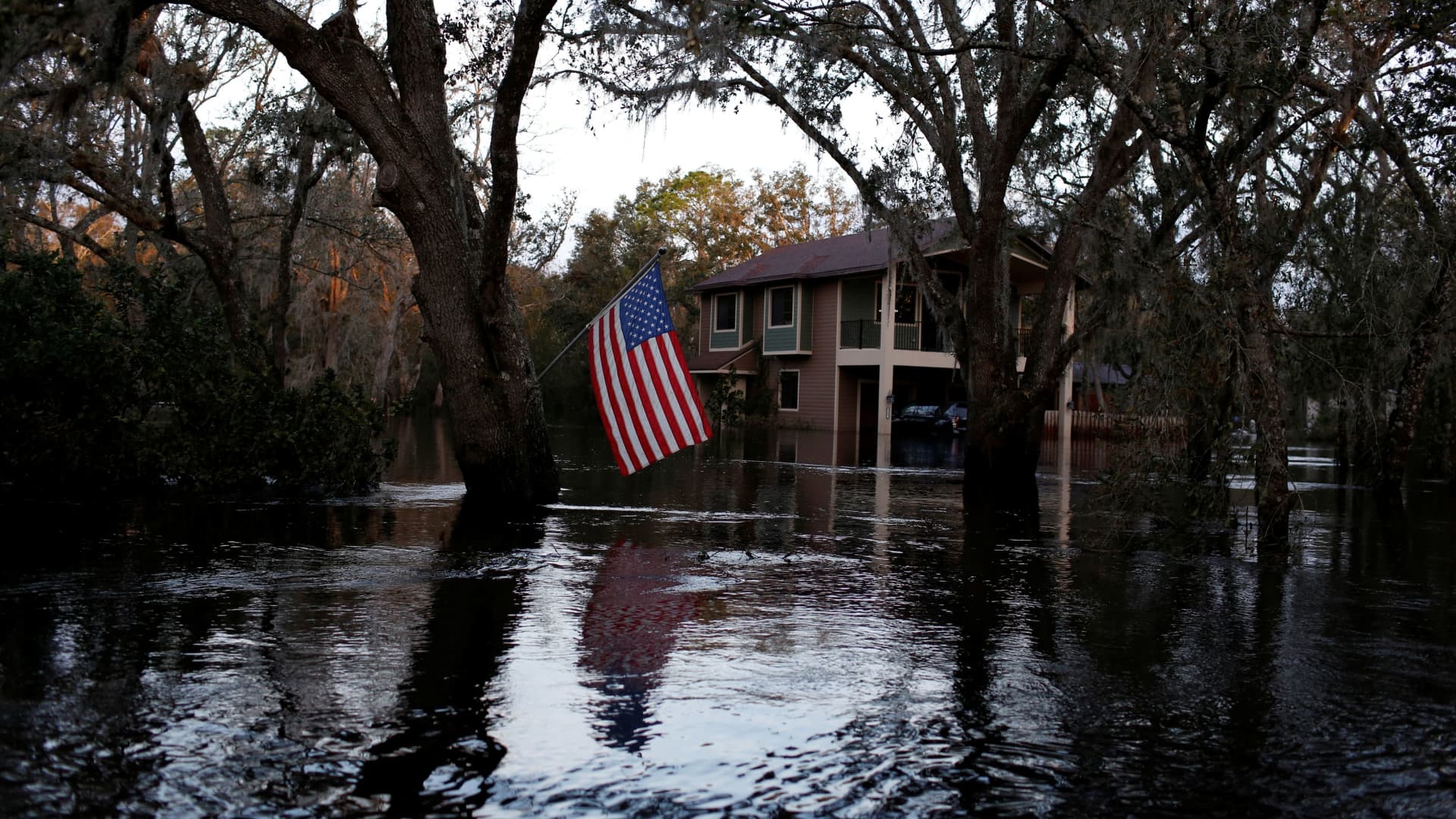Hurricane winds will get stronger in states like Illinois and Tennessee, threatening more properties
2 min read
A U.S. flag is seen in a flooded rural area after Hurricane Ian caused widespread destruction in Arcadia, Florida, October 4, 2022.
Marco Bello | Reuters
Hurricane winds fueled by climate change will expand further inland and put tens of millions of properties in the U.S. at risk over the next three decades, according to a new analysis by the nonprofit research group First Street Foundation.
More than 13 million properties that are not currently exposed to tropical cyclones will be at risk of damage from hurricane-force winds, which are projected to reach further inland as storms increasingly shift up the East Coast, according to the report.
Researchers also estimated the U.S. could experience an annual loss of $18.5 billion from hurricane-force winds that would eventually rise to $20 billion in 2053. Of that increased amount of damage, about $1 billion is projected to come from higher exposure in Florida alone.
Florida, the most vulnerable state to storms, could experience a shift in the landfall of hurricanes from cities in the south like Miami to more northern locations, such as Jacksonville, the report said. The projections come as scores of residents across southwest Florida struggle in the aftermath of Hurricane Ian, which made landfall last September, killing 150 people and leaving hundreds of others displaced.
The mid-Atlantic region will experience the largest rise in maximum wind speeds, the report found. Inland states including Illinois, Kentucky and Tennessee could see wind speeds rise from 87 mph to 97 mph during strong hurricanes. Residents in these states will likely be less prepared for future hikes in wind speeds, the report added.
The projections also show that areas of Maryland, New Jersey, New York and Virginia are at greater risk of destructive storm winds.
Remains of destroyed restaurants, shops and other businesses are seen almost one month after Hurricane Ian landfall in Fort Myers Beach, Florida, U.S., October 26, 2022. REUTERS/Marco Bello
Marco Bello | Reuters
The country’s hurricane season is becoming longer and more intense as climate change triggers more frequent and destructive storms. Matthew Eby, founder and CEO of First Street Foundation, said in a statement that quantifying hurricane wind exposure and the resulting losses for each property across the country “ushers in a new era in the understanding of the physical impacts of climate change.”
“This next generation of hurricane strength will bring unavoidable financial impacts and devastation that have not yet been priced into the market,” Eby said.
The report used historic observations of tropical cyclone formation, strength and landfall rates and adjusted them to account for current sea surface temperatures, atmospheric temperatures and sea levels using the latest climate models from the International Panel on Climate Change. The methodology included measurements of more than 50,000 synthetic storm tracks to determine sustained wind direction and speed.







